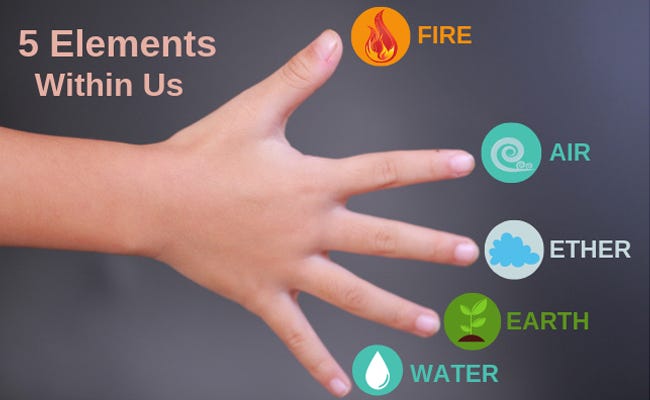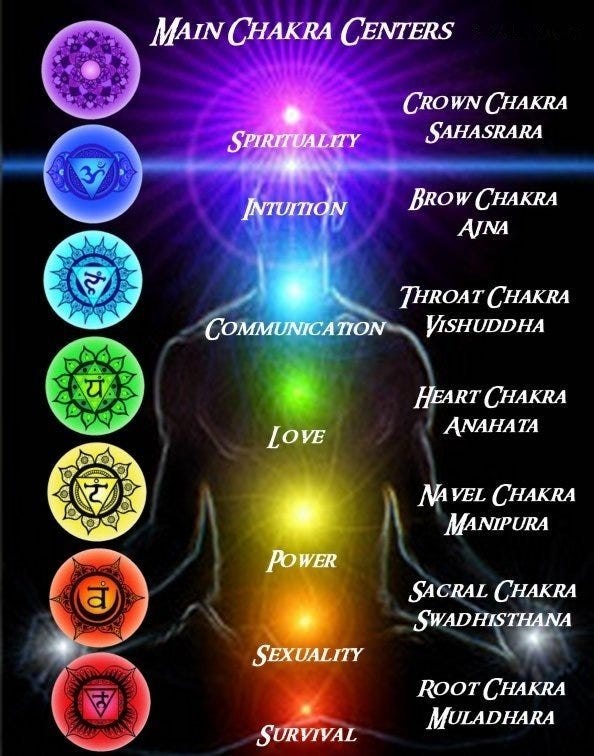Words like mudras, bija mantras, chakras, kundalini awakening, makes complete sense to a yogi but does it resonate with scientific mind? Is there any scientific evidence that these practices really work or is it just a ‘placebo effect’?
We all have a thirst for knowledge whether it is to improve our lives and circumstances, out of sheer curiosity or the urge to get to the bottom of things. Scientific mind will explore for evidences, quantitative statistically significant results to derive a conclusive theory. Being a trained scientist and now a certified yoga teacher, I’m now on my quest to understand the science behind Yoga. In my newsletters, my aim will be to bridge the gap between yoga and science.
Knowledge starts in ignorance and generates new knowledge that generates more ignorance. Such is the wondrous nature of knowledge, the endless pursuit. -Marcelo Gleiser
Let’s first understand the Yogic perspective on mudra, chakras, bija mantras and kundalini awakening:
The word ‘mudra’ is derived from Sanskrit word made up of two syllables: “mud” (bliss) and “dhra” (dissolving), which means dissolving the duality and uniting deity with devotee. Mudra can be gesture of hands (Hasta mudra), or gestures made by the head (Mana mudra), or the whole body (Kaya mudra), lock gestures (Bandha mudra), perineal/pelvic gestures (Adhara mudra). Yogis use mudras during dhyāna (meditation) and pranayama (practice of breath regulation) for channeling energy from the base of the spine (muladhara- root chakra) to the crown of the head (sahasrara- crown chakra), which is referred as kundalini awakening.
How yoga mudras work: The working of yoga mudras is based on the principle of Pancha Mahabhutas which emphasises that human body is made up of five vital elements. These 5 vital elements are represented by the 5 fingers of the hand:
The five fingers are like the five terminals of a human electric circuit which correspond to a specific part of the body and mind. Like reflexology, when in yoga mudra we hold or press a particular finger, the corresponding energy center or gland stimulates in the brain thus completing pranic (life-force) circuit. For more information on mudras and their beneficial effects, read this article: https://www.fitsri.com/articles/yoga-mudras-infographics.
According to Ayurveda, yoga’s ‘sister science’ – disease is the result of an imbalance in our body caused by a deficiency or an excess of one of the five key elements. It is believed that yoga mudra can help to balance, increase or decrease the effect of an element.
The way we arrange fingers in a yoga mudra shows whether it will increase or decrease or balance one of five elements;
To balance the effect of an element – corresponding fingertip is joined with the tip of the thumb.
To increase the effect of an element – thumb is pressed at the base of the corresponding finger.
To decrease the effect of an element – corresponding finger is bent down to the base of the thumb.
Watch the video to better understand the top 5 hand mudras:
Kundalini is a form of divine feminine energy, the source of the life force (pranic energy, chi , bio-energy) believed to be located at the base of the spine, in the muladhara, conceptualized as a coiled-up serpent. It comprises of seventy-two thousand nadis or meridians (energy channels), seven chakras (psychic centres), prana (subtle energy), and bindu (drops of essence).
Chakras are ‘energy centres’ that are aligned with the Sushumnanadi, central channel of the Kundalini system. Yoga tradition describes these points as chit-jada-granthi the points where matter and consciousness meet each other. Hindu Tantra associates six yoginis with six places in the subtle body, corresponding to the six chakras of the six-plus-one system classical system of chakras. The 7 chakra centres are: Muladhara, Swadhisthana, Manipura, Anahata, Vishuddhi, Ajna and Sahasrara.
Every chakra in your body has a chakra sound associated with it, also known as a bija mantra. Bija is a Sanskrit word which means “seed” and Mantra, a Sanskrit word made up of two syllables: “man” (mind) and “tra” (liberate). Bija mantras, mono syllable seed sounds are used as tools for tuning our mind and body to correct energetic resonance by utilizing the power of sound vibrations. There are seven bija mantras that vibrationally align our chakras through sound energy:
1. Muladhara (Root Chakra) – LAM (Pronouncd as lum in alum )
2. Swadhisthana (Sacral Chakra)– VAM (vum as in thumb)
3. Manipura (Solar Plexus Chakra) – RAM (rum)
4. Anahata (Heart Chakra) – YAM (yum as in yummy)
5. Vishuddhi (Throat Chakra) – HAM (hum as in humming)
6. Ajna (Third Eye Chakra) – U ( u as in uber)
7. Sahasrara (Crown Chakra) – Om (aum)
Each bija mantra can be chanted while lying down in savasana (corpse pose) or in dhyana pose- sukhasana (easy pose), virasana (hero pose), or padmasana (lotus pose). Have a look at the
below chart and start awakening your chakras today:
The seven centers are divinely planned exits or ‘trap doors’ through which the soul has descended into the body and through which it must reascend by a process of meditation. By seven successive steps, the soul escapes into Cosmic Consciousness- Paramhansa Yogananda
The experience of kundalini awakening leads to an expansion of conscious awareness, simplicity, contentment, unconditional acceptance. Kundalini awakening can trigger a wide range of phenomena, both positive and negative.
To be able to experience and integrate the positive effects of awakened spiritual energy, a period of careful purification and strengthening of the body and nervous system is usually required beforehand.
The Scientific perspective will be discussed in Part 2
What is your experience with mudras, bija mantras and chakras awakening? Did they ever work for you? Share your experience and let us know in the comments below!
For more thoughts and frequent updates follow me on twitter @DrYoga6




Reply to @Alakananda's question ["Can you please tell me the importance of the mudras..like Gyan mudra, Pran mudra etc"]. Thanks Alakananda for your question.
It seemed that the answer to this can also be helpful to other readers, hence I'm sharing with all the readers.
Mudras is the science of altering or redirecting energy flow in the entire body using hand gestures through acupuncture meridians, bringing your energy body to perfect alignment or balance. There are few scientific evidences supporting this claim [will be discussed in detail in Part II, stay tuned!].
How to perform mudras:
1. Sit in comfortable meditative pose- sukhasana (easy pose) or padmasana (lotus pose). Mudras can be practiced while sitting on chair too.
2. Close your eyes and focus on the breath.
3. Rub your palms for 20-30s to activate the nerve endings in the hand.
4. Place the hands, palm facing up onto your lap. Feel the tingling sensation in the palms.
5. Perform mudras, by pressing fingers in particular manner. Don't apply too much pressure. Only enough to feel the energy flow, gentle pressure is good.
6. Start with 2-5 mins, if comfortable one can practice up to 45 mins.
How to perform different mudras and their benefits:
Gyan Mudra or Knowledge mudra:
Put your hands on your lap, palms facing upward. Join the tip of your thumb with that of the index finger, stretch out the other three fingers on each hand and hold that position.
Benefits: Yogis have reported that this mudra performed consistently helps to improve concentration, ease tension, fights insomnia, depression and relieving headaches.
Pran Mudra:
Touch the tip of ring and little finger with the tip of the thumb and keep the other two fingers (index and middle) extended
Benefits: helps to strengthen immune system, helps in proper circulation, sharpens the vision and improves eyesight.
Other important mudras are:
Vayu Mudra:
Fold your index finger and touch the second phalanx bone with the tip of your thumb. Apply gentle pressure so that the tip of index finger should touch the base of the thumb. Straighten the other three fingers and keep them activated.
Benefits: Helps in easing constipation and releives from bloating, gas
Prithvi Mudra:
Just join the tips of the ring finger and the thumb and keep the other three fingers straight and active.
Benefits: helps overcome fatigue, strengthens the tissues in the body, good for any kind of skin rashes or skin diseases.
Surya Mudra:
Bend your ring finger inward, placing the tip of it at the base of the thumb and touch the second phalanx bone with the thumb and press a little. Stretch out the other three fingers.
Benefits: Improves digestion and metabolism.
Hope this helps.
Very informative while reading this I was having the experience to know more about my body and soul it was a wonderful experience
I tried the Mudras what an amazing experience
Want to know more about these mudras
Espacially crown mudras what mantras should we chant while meditating and how long should we meditate
Thank u for sharing well researched news with us